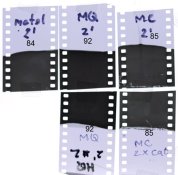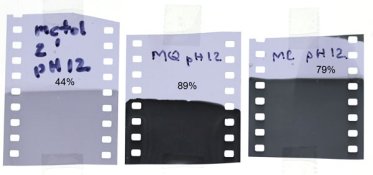Pixophrenic
Member
Since the thread about glycin apparently acting as silver halide solvent had died away, I have found a couple more of similar historical paradoxes.
Nietz in 1922 was able to summarize Lumiere-Andresen rules which among other things predicted that "a developing agent is more powerful if its two groups are in para arrangement than if they are in the ortho configuration", thus hydroquinone is more powerful than catechol (Haist vol.1, p.155).
On page 170, however, Haist cites Umberger as having stated that converting a developing agent into a better surfactant will improve its electron-transfer capability and, hence, its ability to serve a developing agent. In the subsequent three pairs of examples, catechol is implied to be a more powerful developing agent than hydroquinone.
Are there "undocumented confounders" that are responsible for this paradox or should we be content with the statement of Levenson that " Photographic emulsions are such complex things that it is impossible to predict with certainty what will happen under given conditions merely by working on theory"? So then, perhaps there are conditions when one is more “powerful” than the other, and then there are others when the power ratio is reversed? Such as, in superadditivity with metol or phenidone…since developers containing only one of these two chemicals IMO are a profound waste of both?
Nietz in 1922 was able to summarize Lumiere-Andresen rules which among other things predicted that "a developing agent is more powerful if its two groups are in para arrangement than if they are in the ortho configuration", thus hydroquinone is more powerful than catechol (Haist vol.1, p.155).
On page 170, however, Haist cites Umberger as having stated that converting a developing agent into a better surfactant will improve its electron-transfer capability and, hence, its ability to serve a developing agent. In the subsequent three pairs of examples, catechol is implied to be a more powerful developing agent than hydroquinone.
Are there "undocumented confounders" that are responsible for this paradox or should we be content with the statement of Levenson that " Photographic emulsions are such complex things that it is impossible to predict with certainty what will happen under given conditions merely by working on theory"? So then, perhaps there are conditions when one is more “powerful” than the other, and then there are others when the power ratio is reversed? Such as, in superadditivity with metol or phenidone…since developers containing only one of these two chemicals IMO are a profound waste of both?














